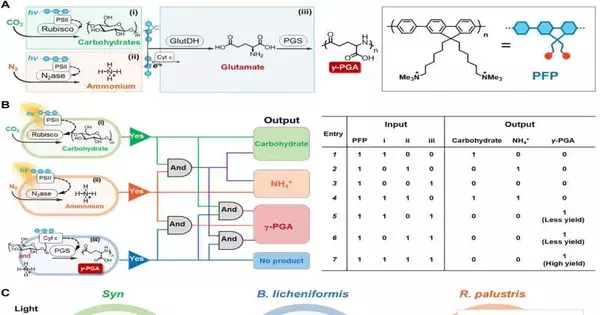A method for significantly enhancing the effectiveness of bacterial production of a commercial polypeptide has been developed by a group of chemists at the Institute of Chemistry of the Chinese Academy of Sciences. Their research has been published in Science Advances.
Natural products have been produced by microbes for many years, but often the yields are too low for large-scale manufacturing. In order to increase yields, chemists have been exploring the symbiotic properties of microbes. To produce a polypeptide that would be commercially appealing, the research team used three different bacterial species’ unique traits in this new endeavor. To further increase productivity, they also added a conductive copolymer.
The soil-dwelling bacteria Bacillus licheniformis served as the inspiration for the research. It has the capacity to naturally produce polyglutamic acid (PGA), a valuable polypeptide. In order to fix carbon from the air and use it in photosynthesis to create a carbohydrate, they added cyanobacteria next. Rhodopseudomonas palustris, a bacteria capable of converting atmospheric nitrogen into ammonium, was then added.
A combination of bacteria was created as a result, and they were able to produce PGA much more effectively than any other known natural method could by itself, using only sunlight, nitrogen, and airborne carbon dioxide. The procedure could be improved, though, as the researchers were aware. The production of -PGA became more stable and effective thanks to the addition of a conductive copolymer that enabled the mixture of bacteria to create a sort of network.
Over other natural methods, the procedure led to an increase in yield of about 104 percent. Additionally, it increased photosynthetic efficiency from 0 to 14%. The system was also modified to produce bacitracin A, and the team discovered that this resulted in an approximately 77 percent increase in yields when compared to other natural methods. The research team highlights the low cost and simplicity of scaling up the process to manufacturing standards. They come to the conclusion that their method also functions as a proof-of-concept, paving the way for the creation of additional methods with various inputs and end results.
More information: Wen Yu et al, Solar-powered multi-organism symbiont mimic system for beyond natural synthesis of polypeptides from CO 2 and N 2, Science Advances (2023). DOI: 10.1126/sciadv.adf6772





